Influence of Diamond Wire Saw Processing Parameters on the Sawn Surface Characteristics of Silicon Nitride Ceramics
Abstract
:1. Introduction
2. Experiment
2.1. Experimental Equipment and Methods
2.2. Evaluation of As-Sawn Surface Characteristics
3. Results and Discussion
3.1. Surface Morphology Characteristics of As-Sawn Slices
3.1.1. Influence of Wire Speed on Slice Surface Morphology
3.1.2. Influence of Feed Speed on Slice Surface Morphology
3.2. Surface Roughness Ra and Waviness Wa of the Sliced Surface
3.2.1. Effect of Wire Speed on Surface Roughness and Waviness of Slices
3.2.2. Effect of Feed Speed on Surface Roughness and Waviness of Slices
4. Conclusions
Author Contributions
Funding
Data Availability Statement
Conflicts of Interest
References
- Lv, X.; Huang, J.; Dong, X.; Yan, Q.; Ge, C. Influence of alpha-Si3N4 coarse powder on densification, microstructure, mechanical properties, and thermal behavior of silicon nitride ceramics. Ceram. Int. 2023, 49, 21815–21824. [Google Scholar] [CrossRef]
- Mir, A.H.; Ahmad, S.N. A study on fabrication of silicon nitride-based advanced ceramic composite materials via spark plasma sintering. Proc. Inst. Mech. Eng. Part L J. Mater. 2021, 235, 1739–1756. [Google Scholar]
- Hu, F.; Zhu, T.; Xie, Z.; Liu, J. Effect of composite sintering additives containing non-oxide on mechanical, thermal and dielectric properties of silicon nitride ceramics substrate. Ceram. Int. 2021, 47, 13635–13643. [Google Scholar] [CrossRef]
- Pramanick, A.; Mandal, S.; Dey, P.P.; Das, P.K. WEDM process optimization of sintered structural ceramic sample by using fuzzy-MPCI technique. Mater. Today Proc. 2021, 41, 925–934. [Google Scholar] [CrossRef]
- Bharathi, V.; Anilchandra, A.R.; Shantanu, S.S. A review on the challenges in machining of ceramics. Mater. Today Proc. 2021, 46, 1451–1458. [Google Scholar]
- Weixler, J.; Zweifel, M.; Schudeleit, T.; Bambach, M.; Wegener, K. Laser ablation study of cutting ceramics with consideration of the beam inclination angle. Materials 2023, 16, 2509. [Google Scholar] [CrossRef]
- Srinivasana, V.P.; Palanib, P.K. Surface integrity, fatigue performance and dry sliding wear behaviour of Si3N4–TiN after wire-electro discharge machining. Ceram. Int. 2020, 46, 10734–10739. [Google Scholar] [CrossRef]
- Li, X.; Gao, Y.; Yin, Y.; Wang, L.; Pu, T. Experiment and theoretical prediction for surface roughness of PV polycrystalline silicon wafer in electroplated diamond wire sawing. J. Manuf. Process. 2020, 49, 82–93. [Google Scholar] [CrossRef]
- Liang, L.; Li, S.; Lan, K.; Yu, R.; Wang, J.; Zhao, W. Experimental study on the influence of wire-saw wear on cutting force and silicon wafer surface. Micromachines 2023, 16, 3619. [Google Scholar] [CrossRef]
- Gao, Y.; Chen, Y. Sawing stress of sic single crystal with void defect in diamond wire saw slicing. Int. J. Adv. Manuf. Technol. 2019, 103, 1019–1031. [Google Scholar]
- Zhu, Z.; Gao, Y.; Zhang, X. Study on subsurface microcrack damage depth of diamond wire as-sawn sapphire crystal wafers. Eng. Fract. Mech. 2023, 28, 109347. [Google Scholar] [CrossRef]
- Wang, N.; Jiang, F.; Xu, X. Research on the machinability of A-plane sapphire under diamond wire sawing in different sawing directions. Ceram. Int. 2019, 45, 10310–10320. [Google Scholar] [CrossRef]
- Qiu, J. Fundamental research on machining performance of diamond wire sawing and diamond wire electrical discharge sawing quartz glass. Ceram. Int. 2023, 48, 24332–24345. [Google Scholar] [CrossRef]
- Ban, X.; Li, Y.; Han, S.; Qiu, H.; Wang, X.; Cui, Z. Parameters optimization for ferrite slicing based on grey theory. Diam. Abras. Eng. 2022, 42, 332–337. [Google Scholar]
- Yang, C.; Wang, Z.; Su, H.; Fu, Y.; Zhang, N.; Ding, W. Numerical analysis and experimental validation of surface roughness and morphology in honing of Inconel 718 nickel-based superalloy. Adv. Manuf. 2023, 11, 130–142. [Google Scholar] [CrossRef]
- Yin, Y.; Gao, Y. Experimental study on slicing photovoltaic polycrystalline silicon with diamond wire saw. Mat. Sci. Semicon. Proc. 2020, 106, 104779–104789. [Google Scholar] [CrossRef]
- Liu, Y.; Gao, Y.; Yang, C. Analysis of sawing characteristics of fine diamond wire slicing multicrystalline silicon. Diam. Relat. Mater. 2021, 12, 108708. [Google Scholar] [CrossRef]
- Qiu, J.; Li, X. Surface formation, morphology, integrity and wire marks in diamond wire slicing of mono-crystalline silicon in the photovoltaic industry. Wear 2022, 488–489, 204186. [Google Scholar] [CrossRef]
- Qiu, J.; Li, X. Formation mechanism of wire bow and its influence on diamond wire saw process and wire cutting capability. Int. J. Mech. Sci. 2020, 185, 105851–105862. [Google Scholar] [CrossRef]
- Costa, E.C.; Santos, C.P.; Carvalho, V.A.; Xavier, F.A. Study on surface integrity and ductile cutting of PV polycrystalline silicon and wear mechanisms of electroplated diamond wire. Int. J. Adv. Manuf. Technol. 2022, 122, 1539–1553. [Google Scholar] [CrossRef]
- Huang, H.; Zhang, Y. Experimental investigation on the machining characteristics of single-crystal SiC sawing with the fixed diamond wire. Int. J. Adv. Manuf. Technol. 2015, 81, 955–965. [Google Scholar] [CrossRef]
- Liang, L.; Li, S.; Lan, K.; Wang, J.; Yu, R. Fixed-diamond abrasive wire-saw cutting force modeling based on changes in contact arc lengths. Micromachines 2023, 14, 1275. [Google Scholar] [CrossRef] [PubMed]
- Yang, C.; Su, H.; Gao, S.; Ai, Q.; Fu, Y.; Ding, W.; Xu, J. Characterization and life prediction of single-pass honing tool for fuel injection nozzle. Chin. J. Aeronaut. 2021, 34, 225–240. [Google Scholar] [CrossRef]
- Zhu, Z.; Gao, Y.; Shi, Z.; Zhang, X. Study on surface characteristics of as-sawn sapphire crystal wafer considering diamond saw wire wear. Wear 2023, 530–531, 205037. [Google Scholar] [CrossRef]
- Liu, Q.; Cheng, J.; Liao, Z.; Luo, X.; Yang, Y.; Li, M.; Yang, H.; Tan, C.; Wang, G.; Ding, W.; et al. Research on the light intensity modulation and characterizing methods of surface texture on KDP optics generated in fly-cutting and micro ball-end milling processes. CIRP J. Manuf. Sci. Technol. 2023, 41, 30–43. [Google Scholar] [CrossRef]
- Liu, Q.; Cheng, J.; Liao, Z.; Liu, M.; Chen, M.; Zhao, J.; Lei, H.; Ding, W. Fractal analysis on machined surface morphologies of soft-brittle kdp crystals processed by micro ball-end milling. Materials 2023, 16, 1782. [Google Scholar] [CrossRef]
- Huang, S.; Gao, S.; Huang, C.; Huang, H. Nanoscale removal mechanisms in abrasive machining of brittle solids. Diam. Abras. Eng. 2022, 42, 257–267. [Google Scholar]
- Li, C.; Piao, Y.; Zhang, F.; Zhang, Y.; Hu, Y.; Wang, Y. Understand anisotropy dependence of damage evolution and material removal during nanoscratch of MgF2 single crystals. Int. J. Extrem. Manuf. 2023, 5, 015101. [Google Scholar] [CrossRef]
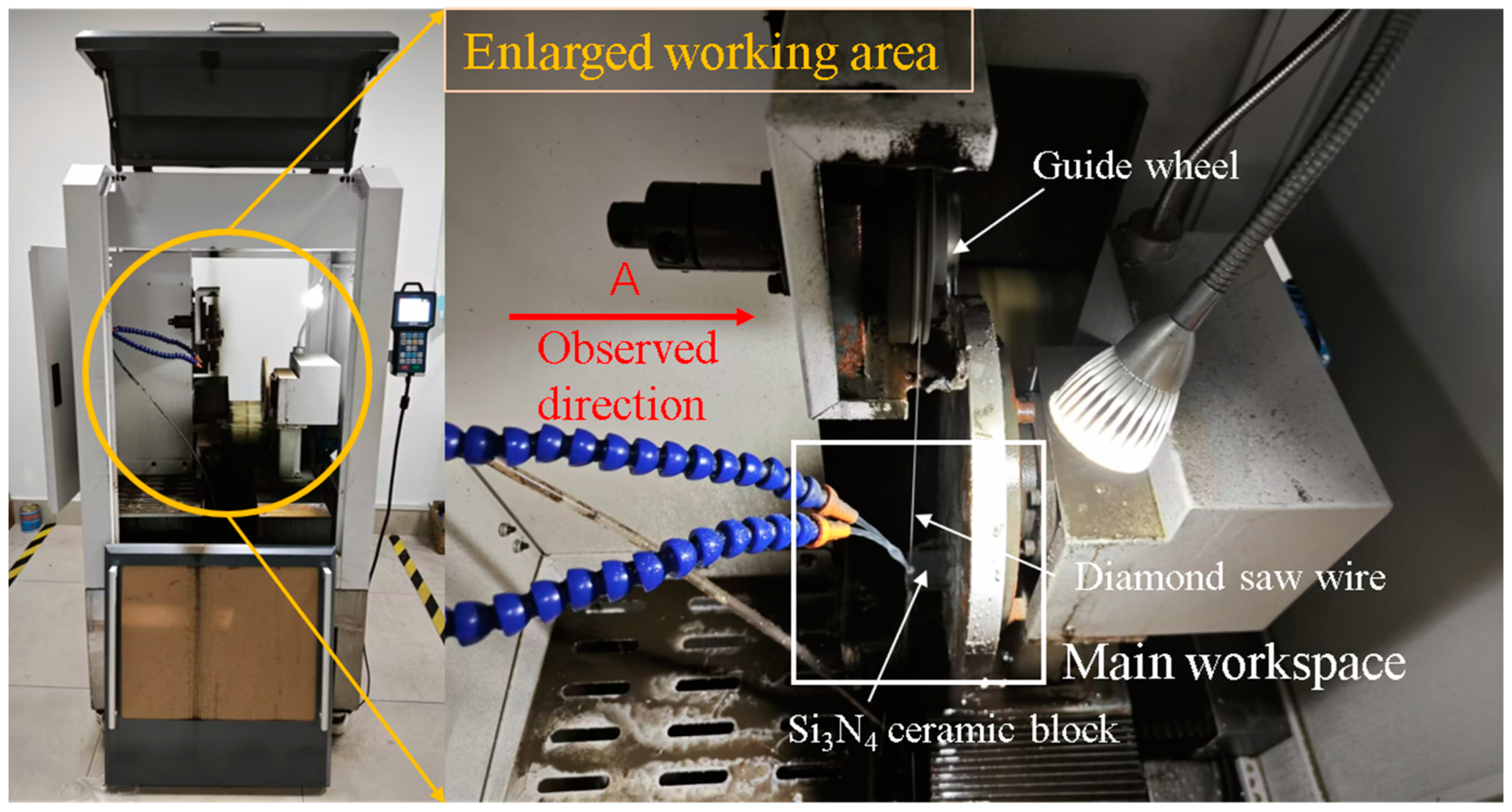
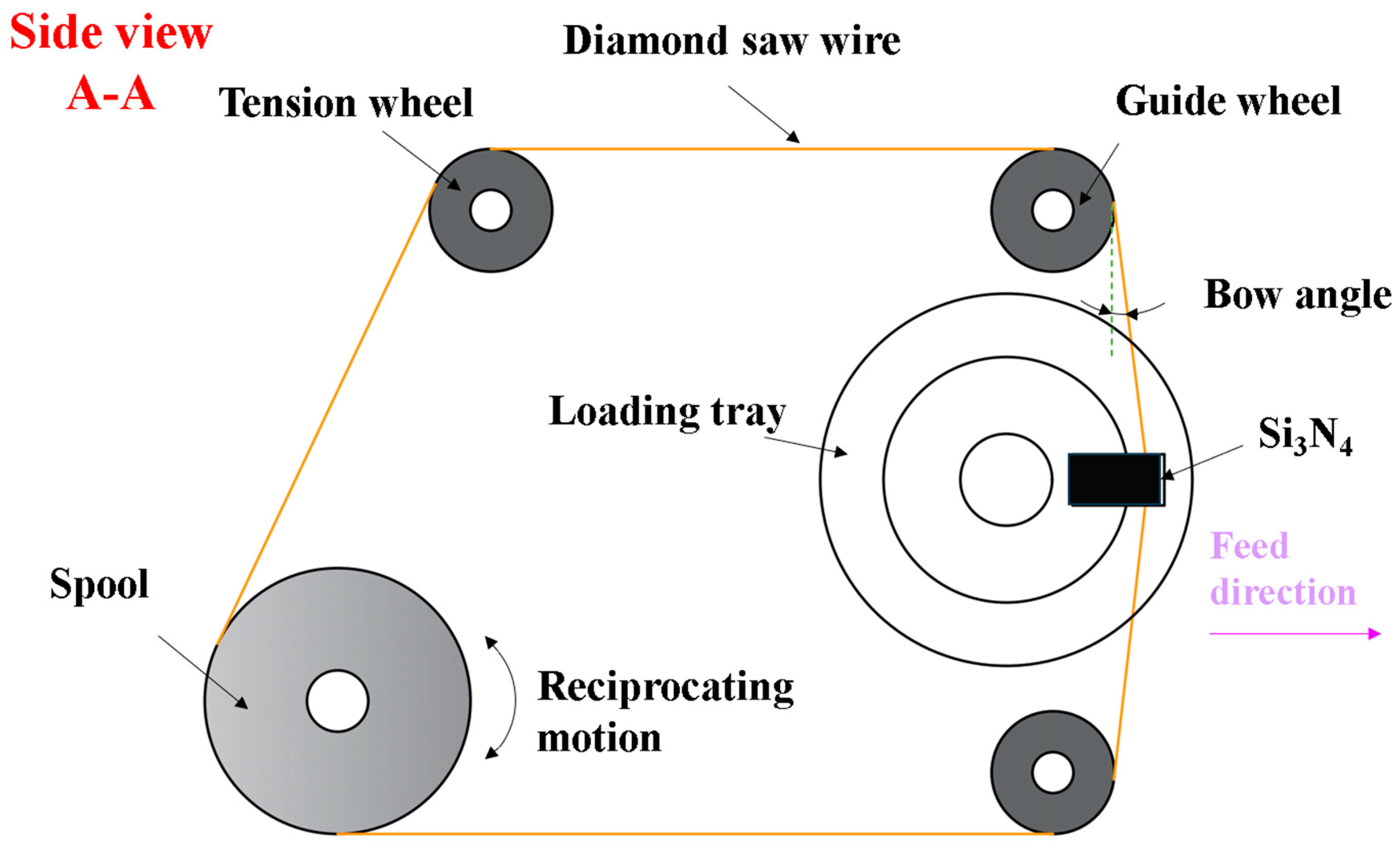
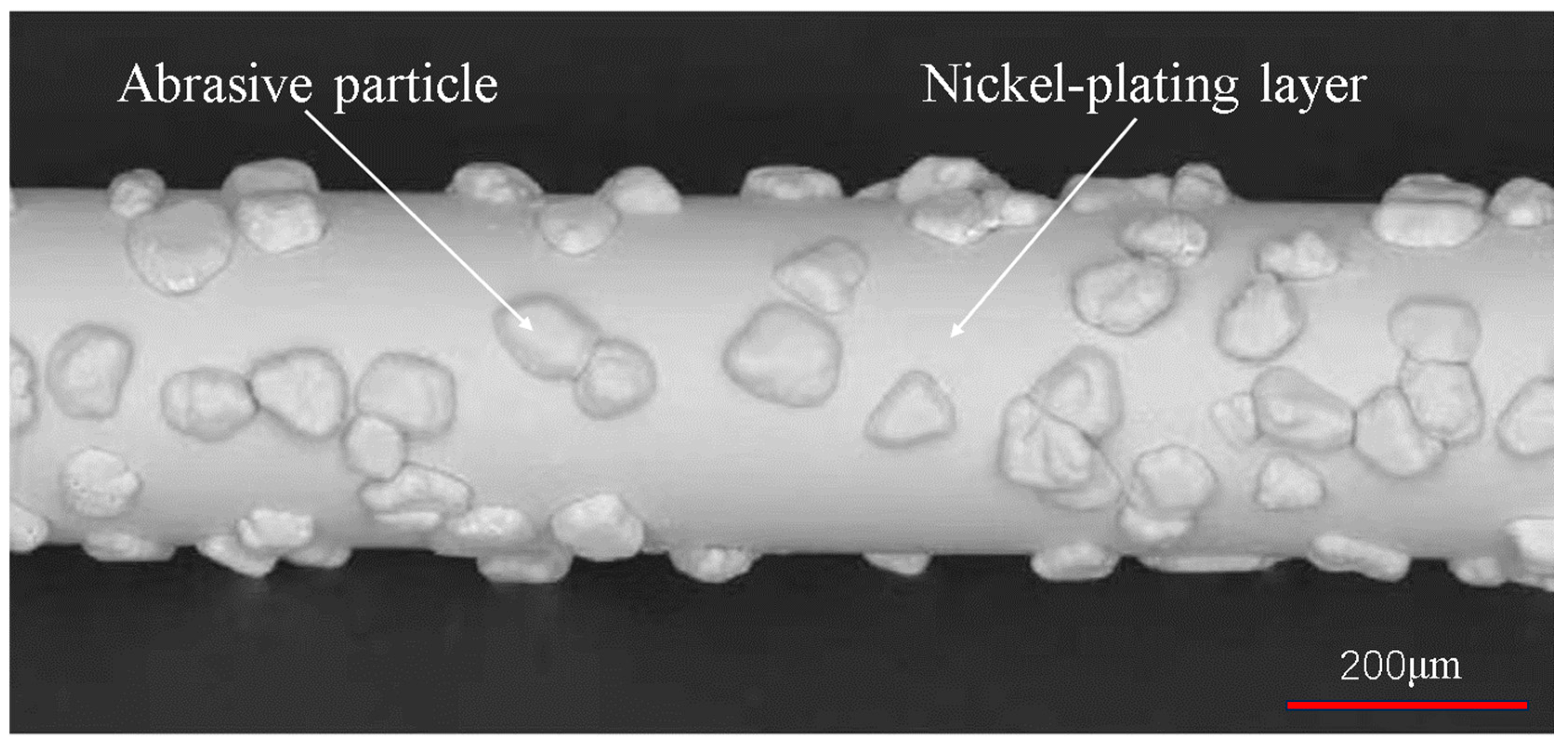
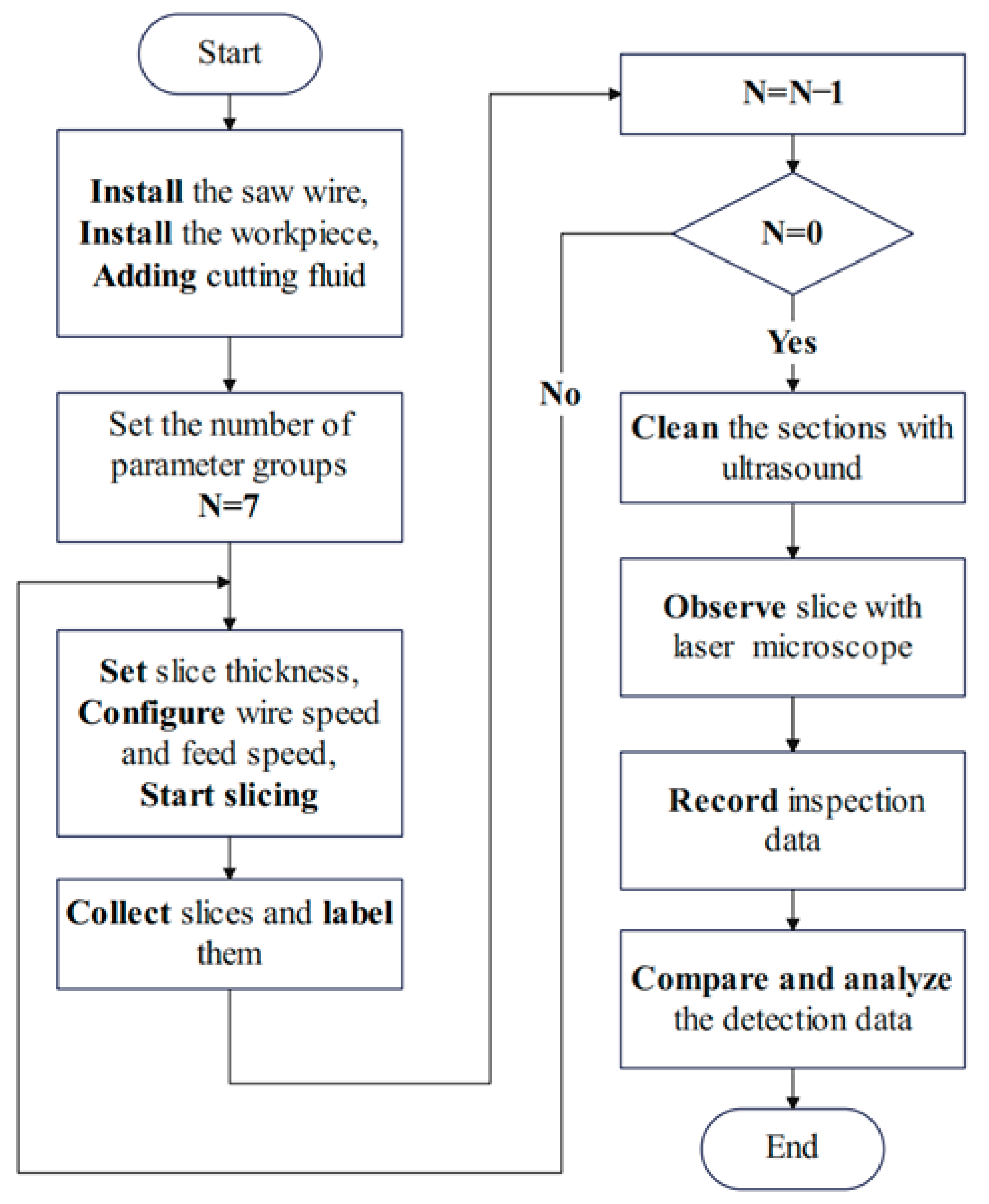
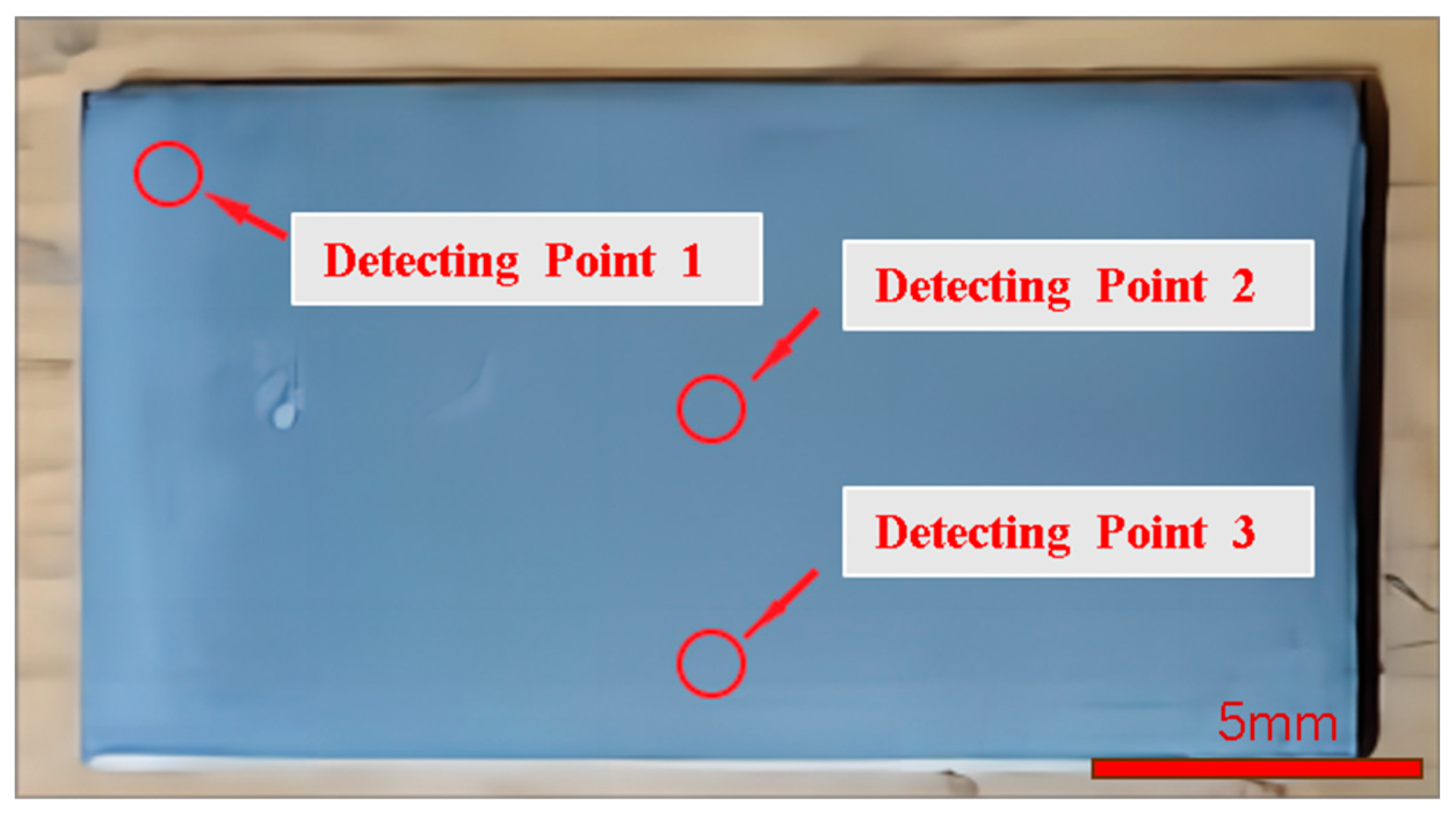
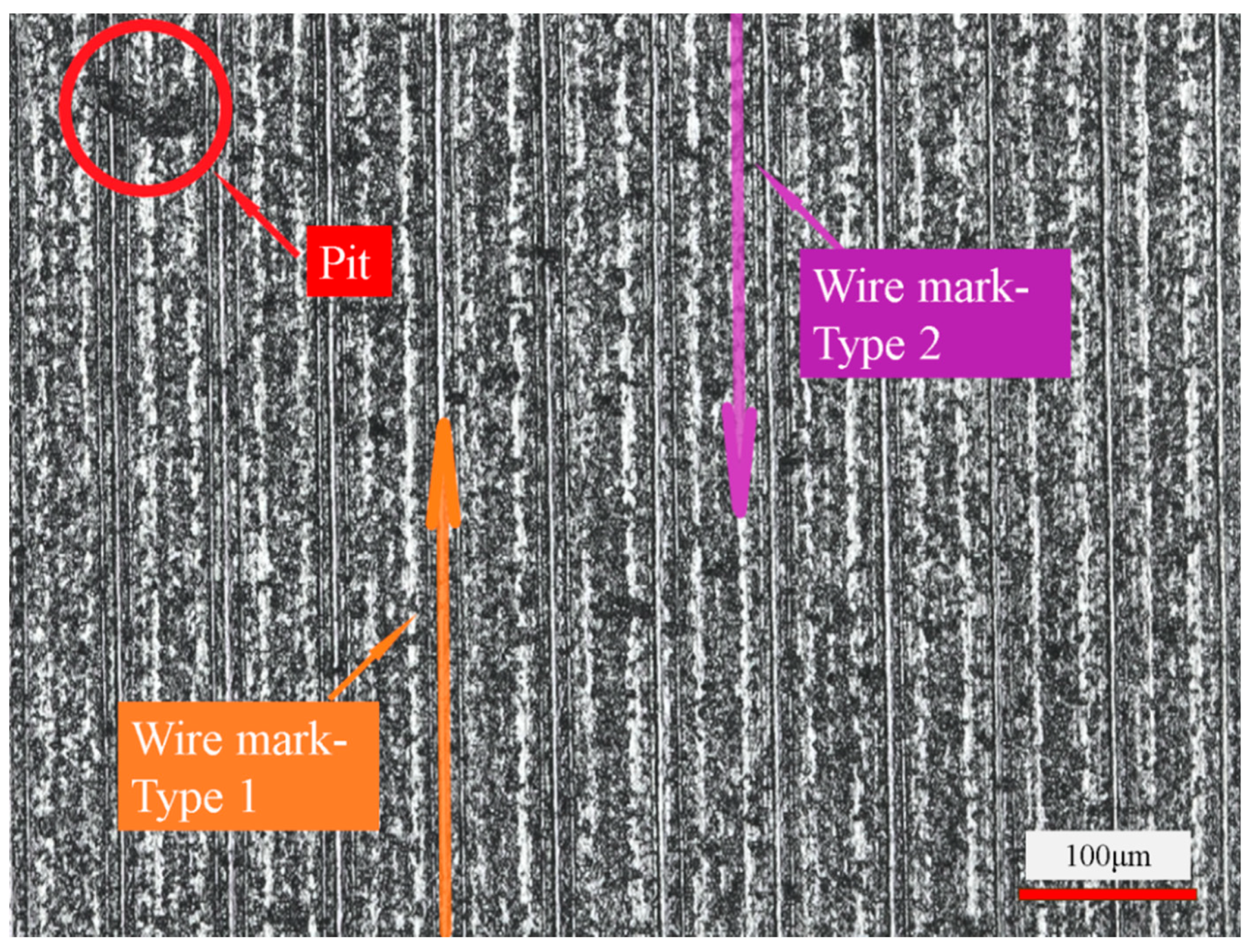
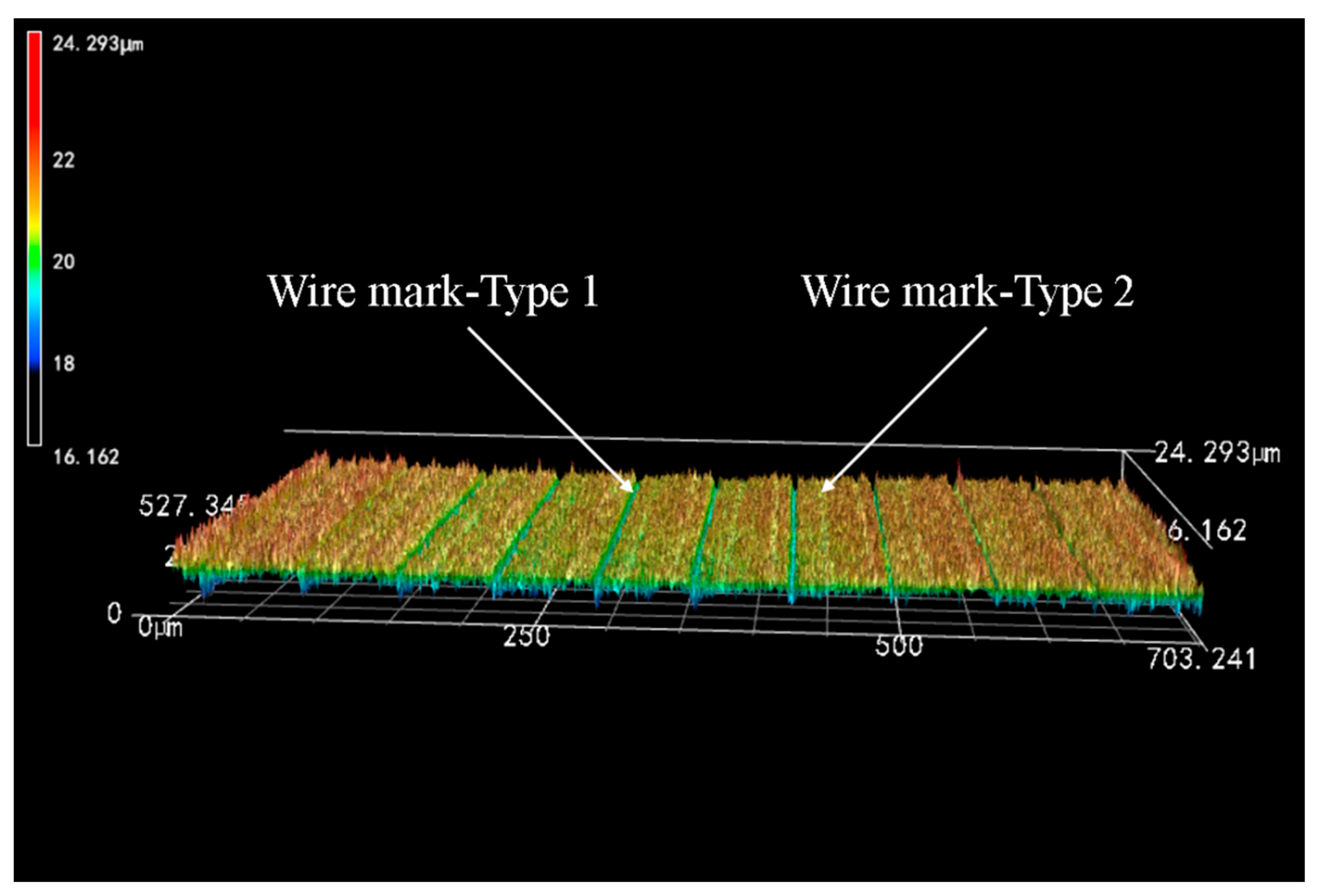
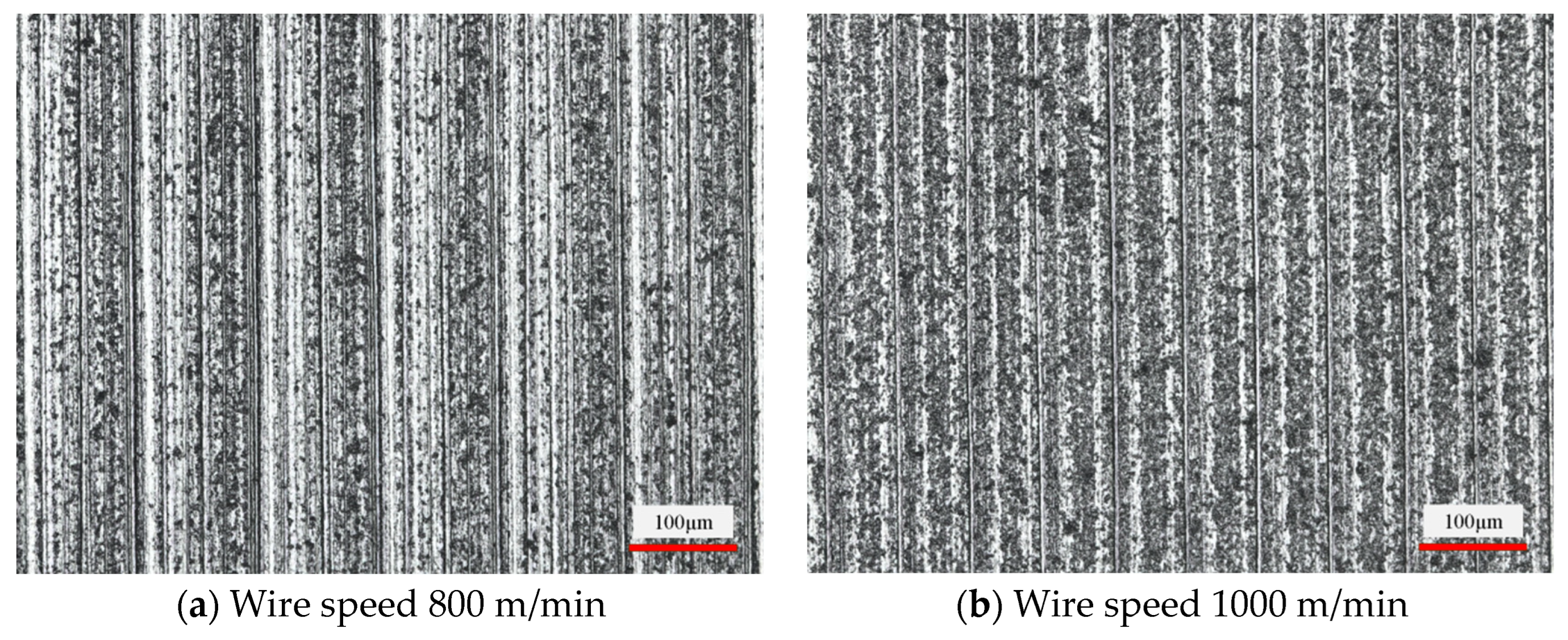
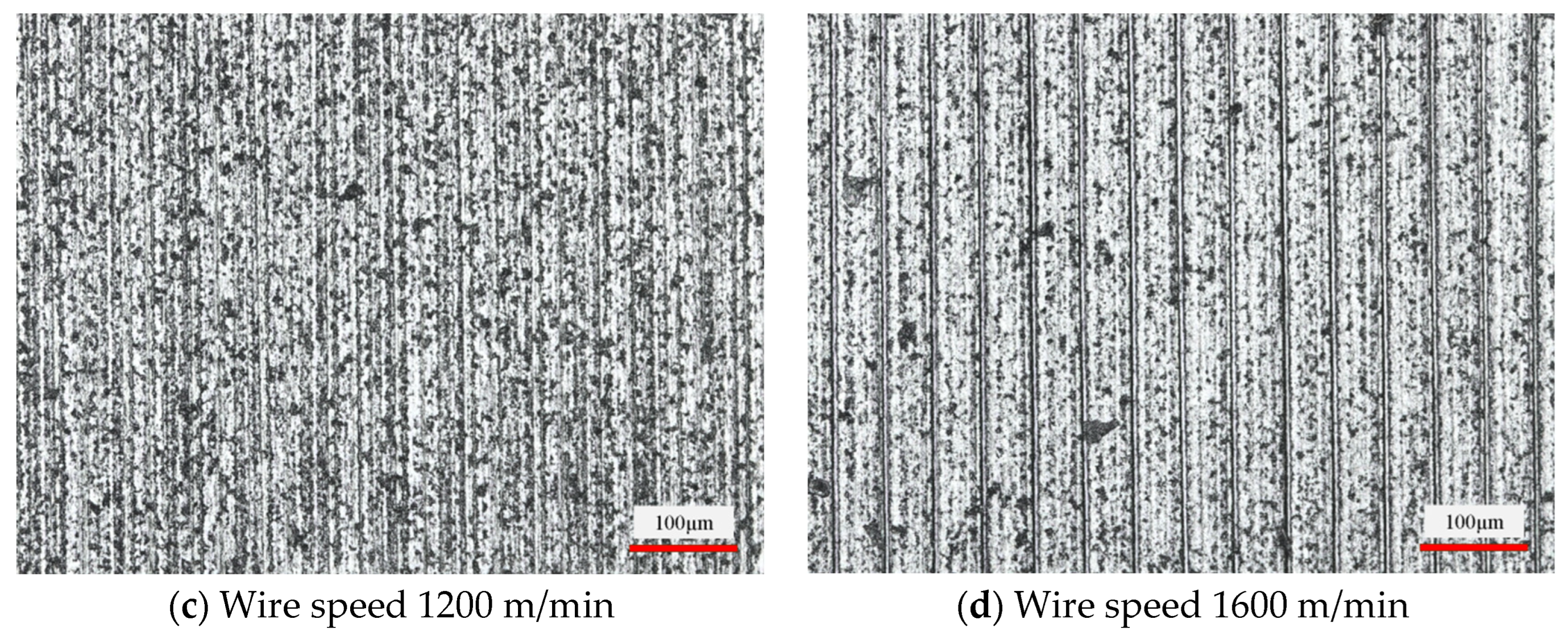


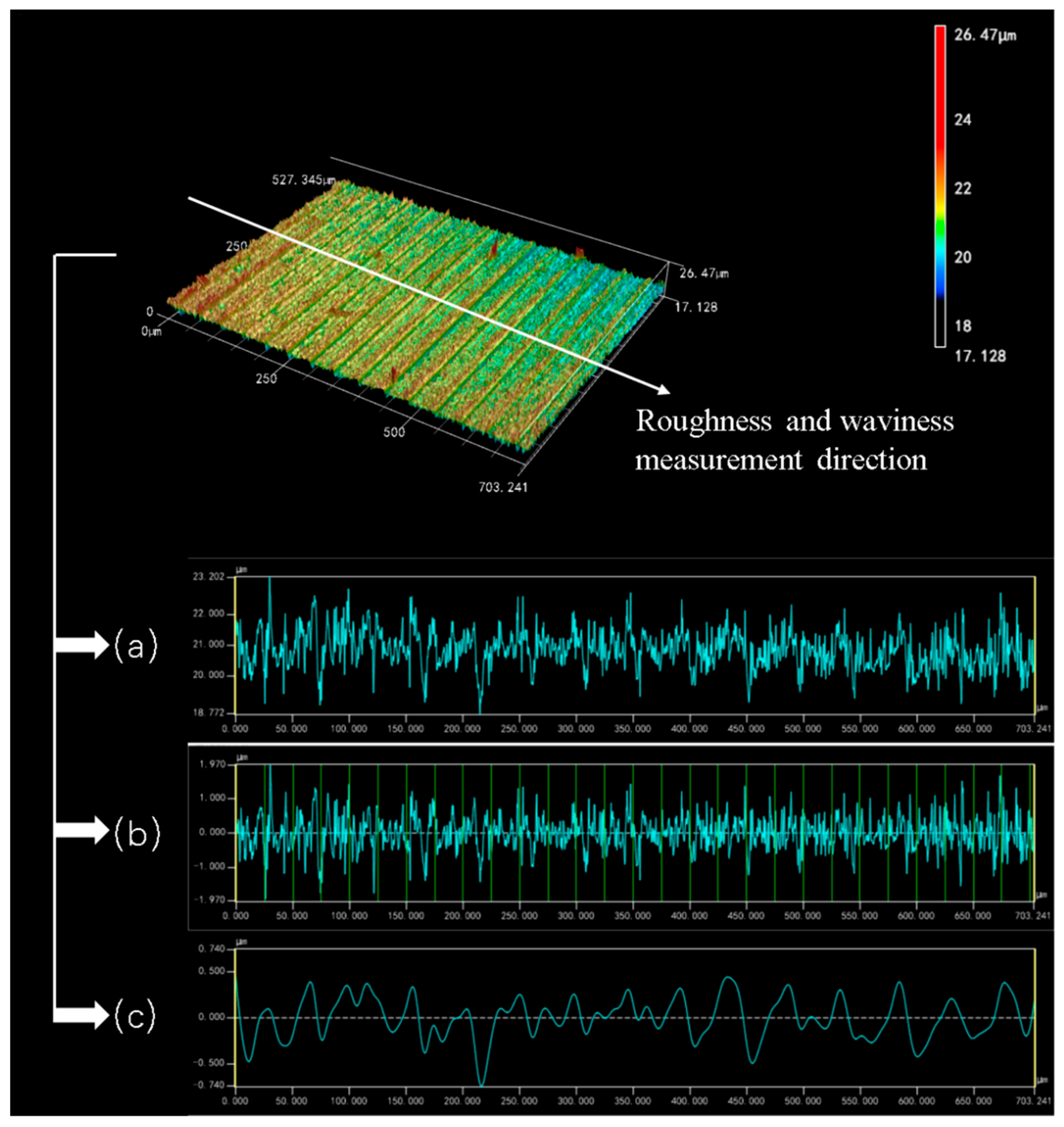
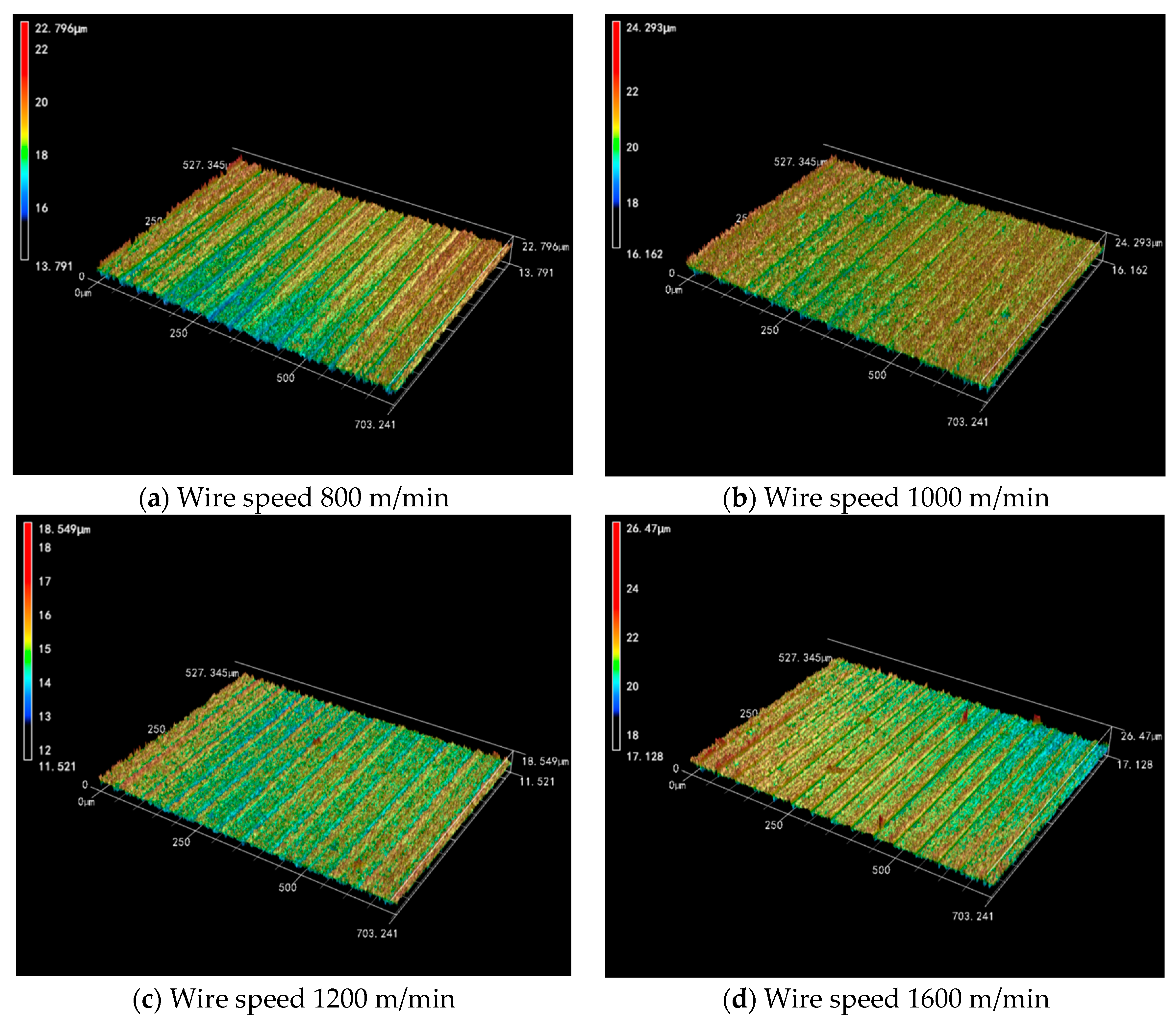
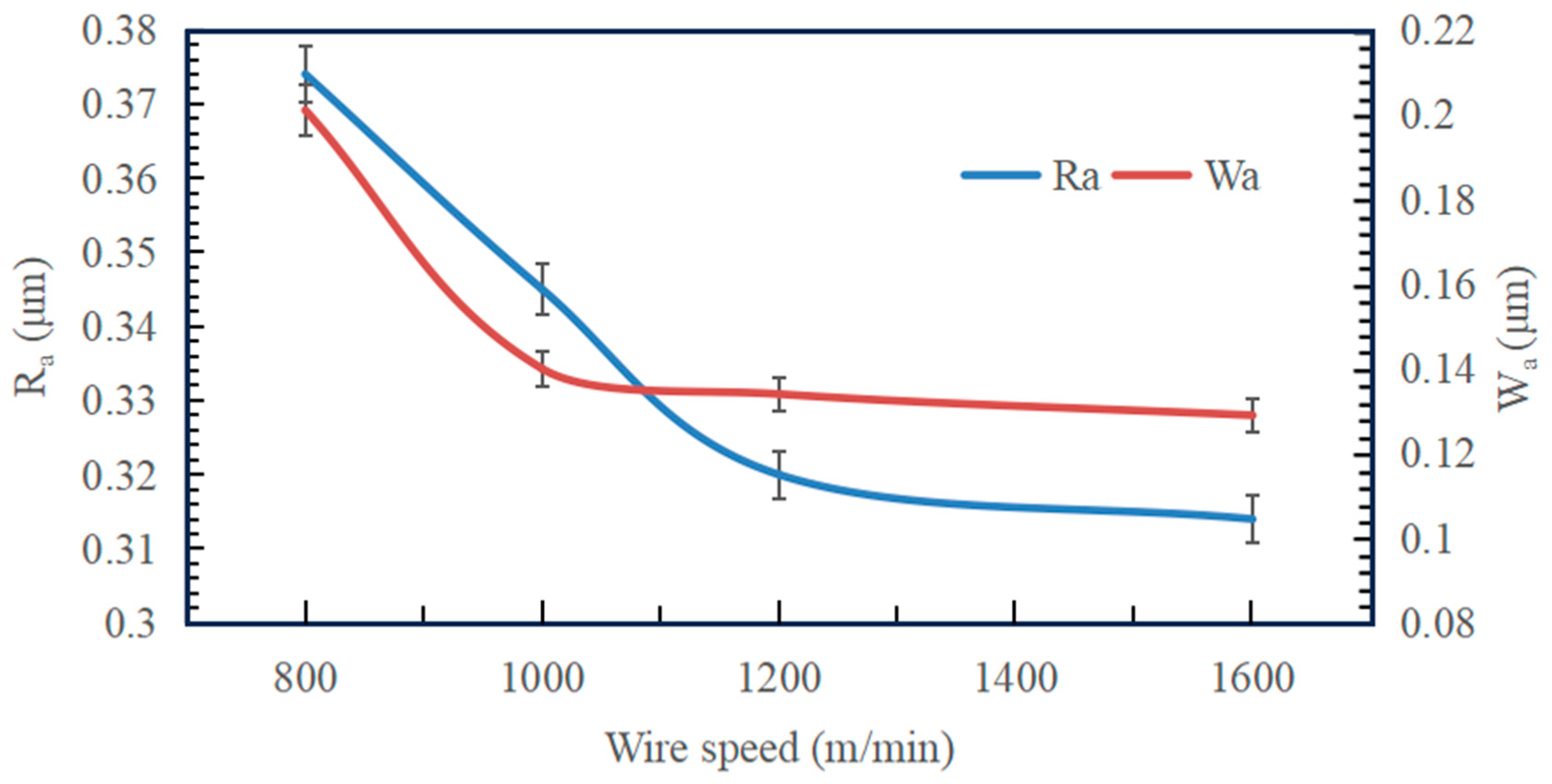
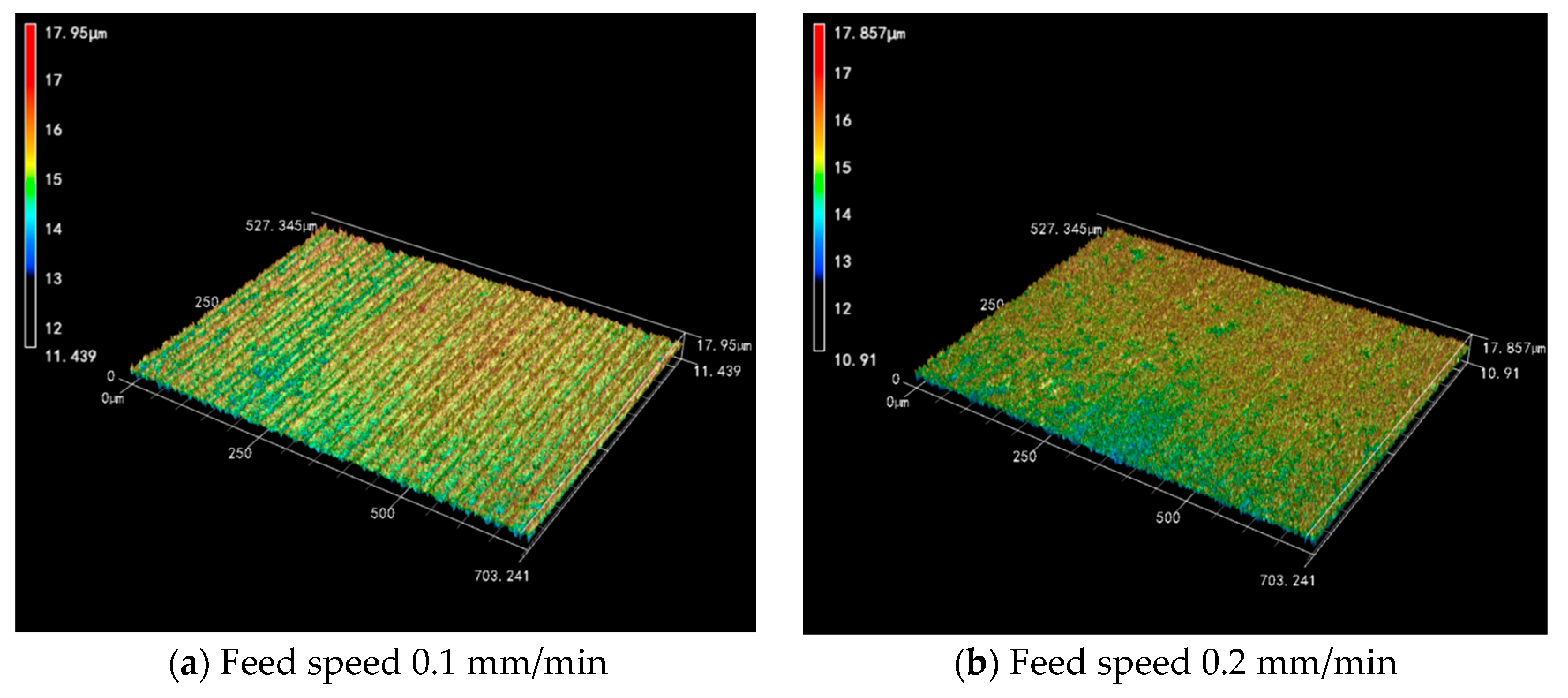
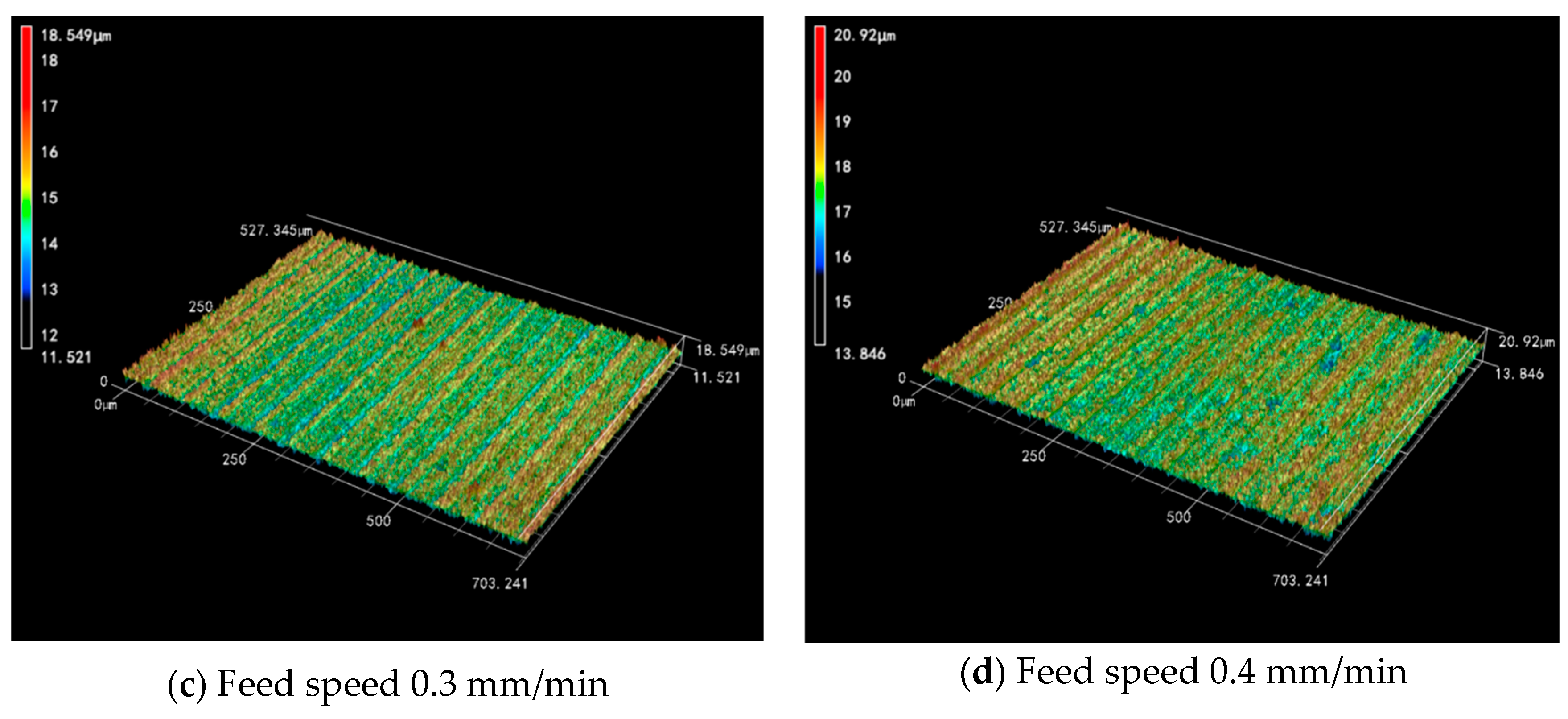
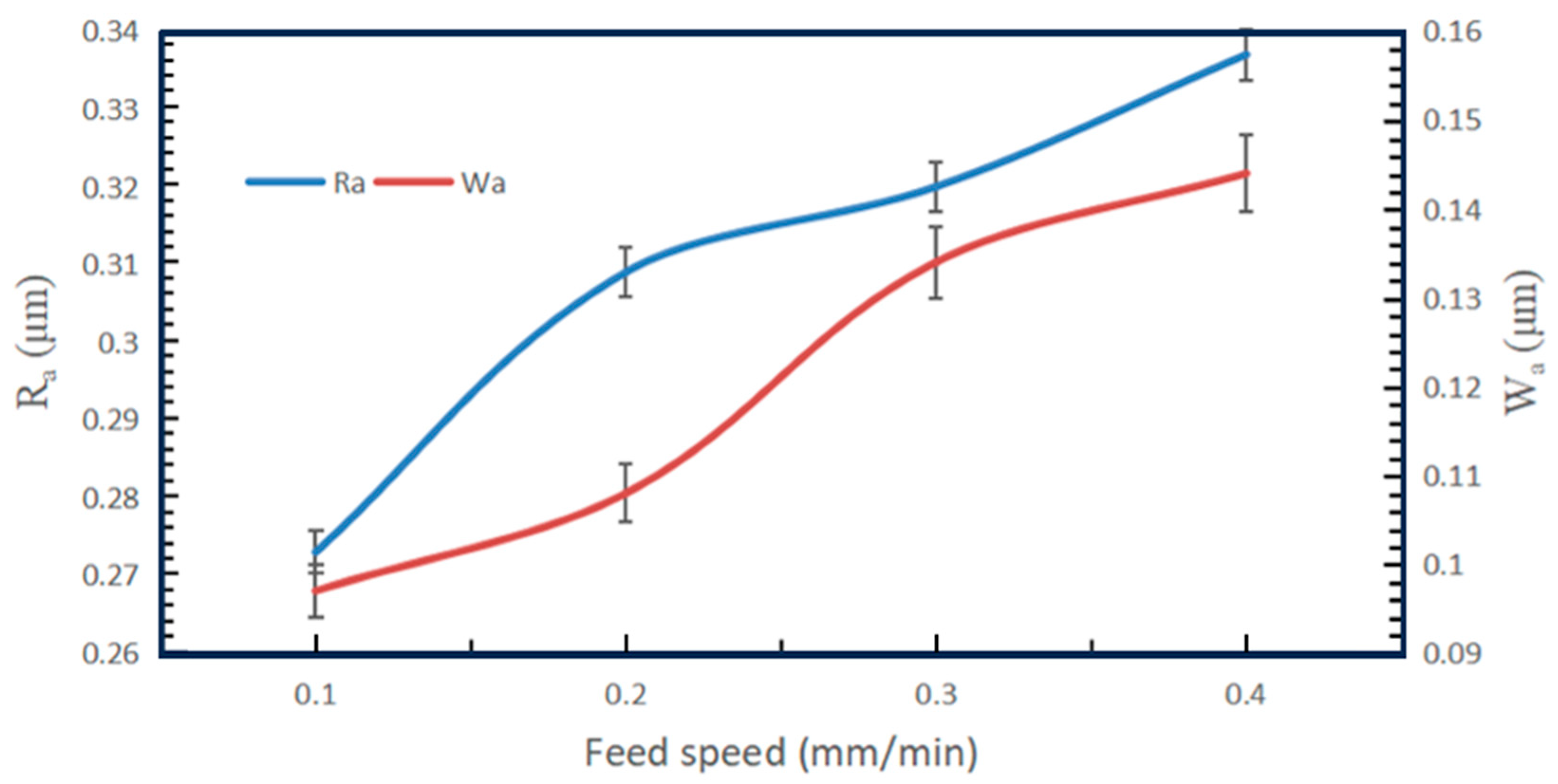
| Parameter | Parameter Value |
|---|---|
| Workpiece size (mm) | 10 × 22 × 35 |
| Slice thickness (mm) | 1 |
| Diamond saw wire length (m) | 80 |
| Maximum saw wire envelope outer diameter (μm) | 350 |
| Type of abrasive grain | Surface nickel plated diamond (25% weight gain) |
| Abrasive grain size (μm) | 30–40 |
| Abrasive grain distribution density (grits/mm) | 70–80 |
| Processing Parameters | Wire Speed/m·min−1 | Feed Speed/mm·min−1 |
|---|---|---|
| Experiment 1 | 800 1000 1200 1600 | 0.3 |
| Experiment 2 | 1200 | 0.1 0.2 0.3 0.4 |
Disclaimer/Publisher’s Note: The statements, opinions and data contained in all publications are solely those of the individual author(s) and contributor(s) and not of MDPI and/or the editor(s). MDPI and/or the editor(s) disclaim responsibility for any injury to people or property resulting from any ideas, methods, instructions or products referred to in the content. |
© 2023 by the authors. Licensee MDPI, Basel, Switzerland. This article is an open access article distributed under the terms and conditions of the Creative Commons Attribution (CC BY) license (https://creativecommons.org/licenses/by/4.0/).
Share and Cite
Zhang, S.; Gao, Y.; Zhang, X.; Guo, Y. Influence of Diamond Wire Saw Processing Parameters on the Sawn Surface Characteristics of Silicon Nitride Ceramics. Micromachines 2023, 14, 1660. https://doi.org/10.3390/mi14091660
Zhang S, Gao Y, Zhang X, Guo Y. Influence of Diamond Wire Saw Processing Parameters on the Sawn Surface Characteristics of Silicon Nitride Ceramics. Micromachines. 2023; 14(9):1660. https://doi.org/10.3390/mi14091660
Chicago/Turabian StyleZhang, Siyuan, Yufei Gao, Xingchun Zhang, and Yufeng Guo. 2023. "Influence of Diamond Wire Saw Processing Parameters on the Sawn Surface Characteristics of Silicon Nitride Ceramics" Micromachines 14, no. 9: 1660. https://doi.org/10.3390/mi14091660
APA StyleZhang, S., Gao, Y., Zhang, X., & Guo, Y. (2023). Influence of Diamond Wire Saw Processing Parameters on the Sawn Surface Characteristics of Silicon Nitride Ceramics. Micromachines, 14(9), 1660. https://doi.org/10.3390/mi14091660






